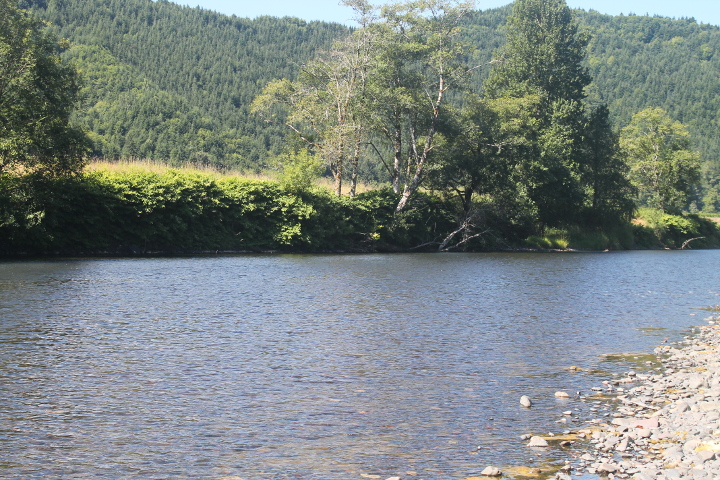-
Many common threads connect geographically separate regulatory and public concerns. Oregon has peak and ecological flows for water storage projects, Nevada has water quality draining from waste rock disposal areas (RDAs), West Virginia (and other Appalachian coal mining areas) has downstream water quality and aquatic biota from valley fill runoff. Related concerns involve fish and the Endangered Species Act (ESA): bull trout in Idaho; salmon in Oregon and Washington; Lahontan cutthroat trout in Nevada.
-
Toxic metals and organic compounds are commonly present at very low concentrations in water, sediments, soils, and rocks. Concentrations cannot be quantified with 99% certainty; if those chemicals are present the instrument cannot distinguish them from zero. Concentrations below laboratory reporting limits are censored because their values are unknown. Censored values can be 70-80% of the available date, a meaningful amount of valuable information. Correct analysis of censored data is particularly important when performing an ecological risk analysis (ERA) as part of the CERCLA Superfund process.
-
Instream Flow Requirements
Categories: Estimated reading time: 2 minutes
The concept of minimal in-stream flows dates from at least the mid-1970s. It is an important issue to everyone who withdraws ground or surface waters, injects water underground, or adds water to streams and rivers, particularly in the drought-stricken western US. At the federal level, the US EPA funded a grant to define ecological and related flows and create methods to measure them and the US Geological Survey developed measurement methods. -
The concept of minimal in-stream flows dates from at least the mid-1970s. It is an important issue to everyone who withdraws ground or surface waters, injects water underground, or adds water to streams and rivers, particularly in the drought-stricken western US. At the federal level, the US EPA funded a grant to define ecological and related flows and create methods to measure them and the US Geological Survey developed measurement methods.
-
Instream water rights are (or should be) based on ecological flows. Several western states (including Oregon, Alaska, California, Colorado, and Montana) have statutory requirements for these flows, and the US Geological Survey’s Fort Collins Science Center hosts an ecological flows research center. Incorporating effects of changes in climate, human population size and distribution patterns, and other variables makes it difficult for policy makers to allocate a scarce and varying resource among competing vested interests.
-
Instream Water Rights and Ecological Flows
Categories: Estimated reading time: 2 minutes
Instream water rights are (or should be) based on ecological flows. Several western states (including Oregon, Alaska, California, Colorado, and Montana) have statutory requirements for these flows, and the US Geological Survey’s Fort Collins Science Center hosts an ecological flows research center. Incorporating effects of changes in climate, human population size and distribution patterns, and other variables makes it difficult for policy makers to allocate a scarce and varying resource among competing vested interests. -
Water quality matters for humans, livestock, fish and wildlife, and plants including food crops. Too often policies and regulations are ineffective while restoration projects fail to achieve intended goals. The problem is seen in environmental impact assessments, point- and nonpoint-source discharges, and Superfund sites. While some reasons for failure are project-specific, three common and easily avoided reasons are the lack of knowledge about spatial and temporal distribution of the chemical of concern, no information about the causes and amount of variability, and the focus on concentrations at a local point rather than on the entire ecosystem.

